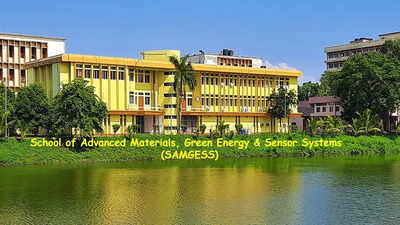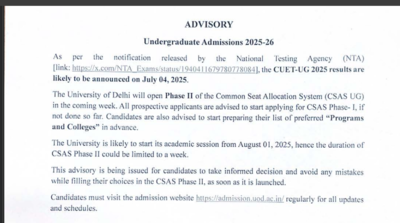Writers’ Building was the cradle of West Bengal’s first engineering college: Can you guess the name?

Not all legends wear capes; some rise from the foundations of bricks and blueprints. In 1856, as the British Raj laid tracks across Indian soil, a humble Civil Engineering College found its beginnings inside Kolkata’s iconic Writers’ Building. Its mission? To churn out engineers for the colonial Public Works Department. But what began as a colonial necessity soon ignited a spark that would fuel one of India’s greatest centres of technical brilliance, IIEST Shibpur.A nomadic start, a permanent identity.Affiliated to Calcutta University in 1857, the college was incorporated into Presidency College from 1865–1869. After a brief stint, the institution uprooted itself in 1880 and made a defining move to Shibpur, settling near the banks of the Hooghly River. With this shift came a new identity, the Government College, Howrah. It soon expanded into Mechanical Engineering and embraced a fully residential model by 1889, a rarity in those days. The campus didn’t just provide accommodation; it cultivated a culture.
The rise of BE College : A vision beyond borders
In 1921, the institute became Bengal Engineering College (BE College), marking its foray into a broader engineering curriculum and national relevance. Post-Independence, as India embarked on its industrial dreams, the college launched postgraduate and doctoral programmes and even struck a pivotal collaboration with the University of Wisconsin, USA, an academic bridge few Indian institutions dared to build at the time. It wasn’t just keeping up; it was leading.
BESU: A modern university with roots in antiquity
As India’s higher education evolved, so did BE College. In 1992, it was declared a Deemed University, later transforming into the Bengal Engineering and Science University (BESU) in 2004. Inaugurated by President A.P.J. Abdul Kalam in 2005, BESU introduced science programmes alongside engineering and positioned itself as a knowledge crucible where disciplines collided and coalesced.
The tipping point: Becoming IIEST
The decade-long pursuit of excellence culminated in 2014, when BESU was upgraded to the Indian Institute of Engineering Science and Technology, Shibpur, India’s first IIEST and an Institute of National Importance. The move, backed by the Government of India and mentored by IIT Kanpur, wasn’t merely symbolic; it was strategic. With ₹592.2 crore in sanctioned funds and a clear vision to produce scientists for India’s strategic sectors and academia, the institution entered a new league.
A legacy burdened by glory and growing pains
IIEST Shibpur today occupies a unique place in Indian academia. Despite a ranking slide, from 21 in NIRF 2020 to 49 in 2024, the institution continues to punch above its weight in terms of legacy, research output, and alumni influence. Yet, it grapples with an age-old constraint: Land. With 121 acres at its disposal, the campus craves another 100 to match its growing ambitions. In 2014, its founding director candidly confessed that the land space crunch is the biggest ordeal that they are encountering.
Beyond the classroom: Quiet revolutions in research
In the last decade, IIEST has emerged as a silent but potent force in niche research. From a ₹130 crore ten-storey hostel to the establishment of a cutting-edge Fundamental Research Lab on Homeopathy with support from the Ministry of AYUSH, the institute is no longer just preserving legacy; it’s creating one for the future.
An institution, not just an address
IIEST Shibpur is more than a location on the educational map; it’s an embodiment of India’s tryst with modernity, resilience, and scientific nation-building. In an era where Ivy Leagues and IITs dominate headlines, this 169-year-old engineering titan continues to thrive, quietly, modestly, and purposefully.The tale of IIEST is not just the story of West Bengal’s first engineering college. It’s a chronicle of how colonial infrastructure turned into a national cornerstone, and how legacy, when paired with vision, can build more than just buildings. It builds a future.






